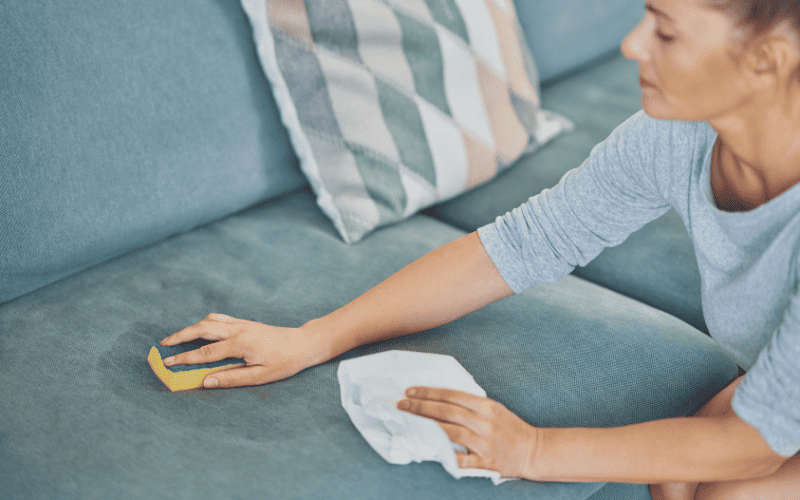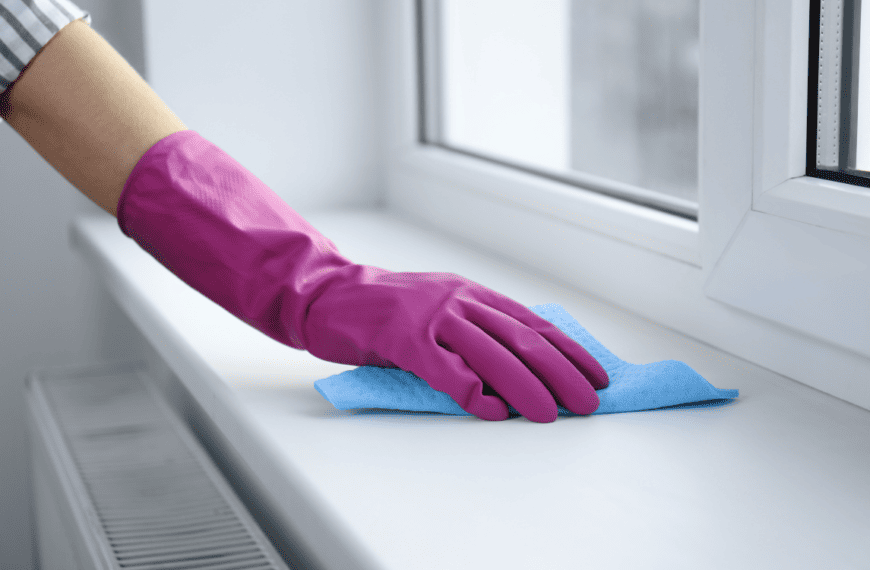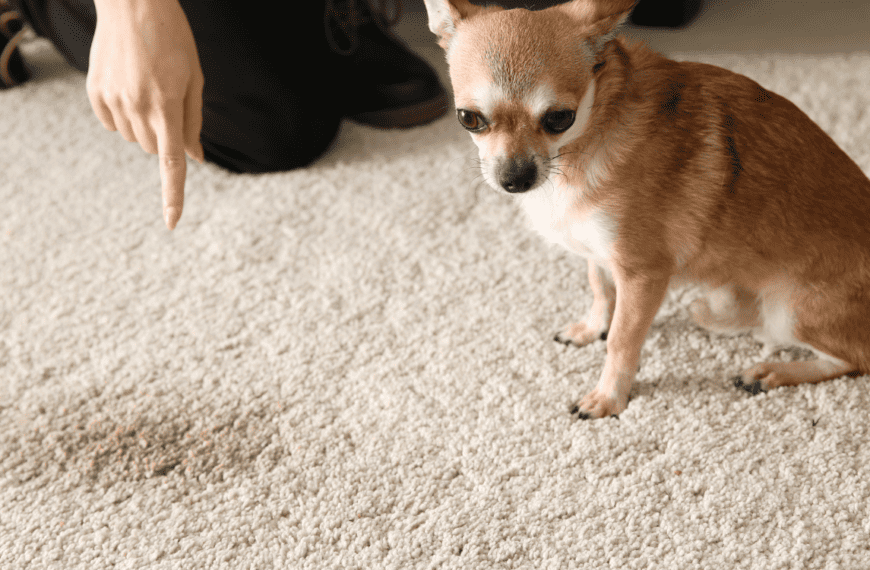In my household, pets and kids are the most likely to use the couch and the least likely to keep it clean. That’s one reason I chose a lot of leather for the current setup, but still, nothing is safe from stains and ensuing odors. Between my shedding dog burrowing a nest in the sofa and my littlest spilling milk on my cloth chairs, it’s like being stuck in an endless cycle of cleaning and deodorizing.
If you’re dealing with a smelly couch, I feel your pain. Late-night TV watching isn’t easy when you’re uncomfortable, and you’ll rarely want company over if you have to subject them to a stinky living room. Fortunately, I’ve found tons of easy ways to ensure long-lasting freshness, secrets you’ll discover as we explore how to get smells out of couch cushions.
How Do You Get the Smell Out of a Fabric Couch?
After vacuuming your couch to remove odors from dirt, dust, and pet hair, you can apply a deodorizing solution. You can sprinkle baking soda over the entire sofa or spray a commercial or DIY freshener. A steam cleaner or upholstery tool may be necessary for deeper deodorizing when you have extra-tough pet odors.
What You’ll Need
- Vacuum cleaner
- Baking Soda
- Spray bottle
- White vinegar
- Rubbing alcohol
- Dish soap
- Activated charcoal
- Enzyme cleaner
- Steam cleaner
Step 1: Check the Care Label
Before you clean a fabric couch, you should know which products will be safe and effective on the upholstery. Each sofa has a care label detailing the type of fabric, its cleaning code, and the appropriate cleaning solution. You can typically find the tag on the platform under one of the cushions or, if it’s a reclining sofa, on the underside of a footrest.
The following are the standard care codes you can expect to see:
- W: Water-based cleaners only (common with synthetic materials)
- S: Solvent-based cleaners only (dry cleaning solutions only; common with natural materials like silk)
- W/S: Water or solvent-based cleaners will work
- X: Do not apply any cleaning solution
For light deodorizing, you may not have to worry as much about the type of fabric. The primary concerns are degrading, discoloring, or warping the fabric with too much of the wrong cleaner, which is unlikely with dry and spray-on deodorizing solutions. The care label will be crucial to reference if you must spot-clean stains or do a whole-couch deep clean.
Step 2: Brush or Vacuum
Before deodorizing, vacuum your couch to remove crumbs, pet hair, dirt, and other debris that may contribute to the stale odor. Use the upholstery brush attachment to dislodge dug-in dirt and debris. Cover the entire surface, including tricky areas under cushions.
Step 3: Spot Clean Your Couch
Spot-clean individual stains before deodorizing the sofa. You’ll want to thoroughly check the entire surface when refreshing a used couch or if you’re dealing with a sudden smell, as they often come from a single stinky source.
Always spot-test new cleaners on an inconspicuous area if you’re unsure whether your fabric will respond favorably. For more information on removing stains, check out our article on how to deep clean a sofa.
Step 4: Deodorize the Couch
After cleaning visible stains as well as you can, you can take a crack at getting rid of that foul smell. You have tons of viable commercial and homemade cleaning solutions to try.
Option 1: Baking Soda
Baking soda is a top choice for removing foul odors from everything from a smelly fridge to even smellier footwear, so you can bet it’s an excellent first option for your fabric couch. It can neutralize and absorb smells from people, pets, and microbes on numerous synthetic and organic materials while pulling up lingering moisture. You can use it as a follow-up to dry a spray cleaning solution or by itself as a general-purpose deodorizer.
- Sprinkle baking soda liberally on the entire couch or only on the area with a localized smell
- Let the baking soda sit for at least 20–30 minutes
- Suck up the baking soda with a wet/dry vac, as the fine powder can eventually damage your regular vacuum cleaner
Option 2: White Vinegar Solution
A gentle vinegar spray isn’t the most powerful disinfectant, but it could be just what you need to absorb odors causing a generally smelly couch. Acetic acid binds to many volatile molecules, lifting the foul smell as the vinegar evaporates. You don’t need cleaning vinegar, only the standard distilled white vinegar you likely have in your kitchen. Avoid white wine vinegar, ACV, and other vinegar types, as they are less effective and may stain.
- Fill a spray bottle with two parts water to one part white vinegar (optional: add a few drops of mild dish soap for added freshness)
- Spritz the sofa cushions with the solution
- Let the couch air dry (the vinegar smell will go away)
Option 3: Rubbing Alcohol Solution
Like white vinegar, rubbing alcohol is one of the simplest cleaning solutions you probably have handy right now to manage couch smells. The disinfecting solvent kills bacteria and evaporates quickly for fuss-free odor removal.
- Mix two parts water with one part isopropyl alcohol in a spray bottle (optional: add a few drops of your favorite essential oils to cover the alcohol smell)
- Spritz the couch with the cleaning solution
- Let the sofa air dry
Option 4: Activated Charcoal
Activated charcoal attracts odor molecules like a magnet, adsorbing them to its vast surface area to keep them away from your nostrils. It’s one of our primary recommendations when you have to deodorize a room and need to get rid of stubborn smells rather than mask them, making it a sound option for a generally smelly couch.
- Remove the couch cushions
- Place activated charcoal deodorizers like these bamboo charcoal pouches from Vitscan in the sofa corners next to the arms and under the back cushions
- Replace the couch cushions
- Recharge the pouches every few weeks according to the manufacturer’s directions
Option 5: Odor-Removal Spray
It’s hard to beat a fabric spray for fast and straightforward odor removal. It won’t do anything to clean your couch, but a commercial product like Febreze or ZorbX will replace odors in numerous fabric types with a fresh scent. Follow the manufacturer’s directions for safe and effective use. You’ll generally only need to shake, spray, and let the product dry to whisk away odors.
Option 6: Enzyme Cleaner
Enzyme cleaners like Rocco & Roxie Stain & Odor Eliminator are my favorite approach for handling organic smells like pet stains and body odor. Bacteria and enzymes break down odor-causing compounds, thoroughly removing them and preventing the smell from returning.
Spray your enzyme cleaner on the sofa fabric, and let it sit for the recommended dwell time. You may need to blot the fabric with a dry or damp cloth afterward, or it may only have to sit and evaporate.
Option 7: Wash Removable Covers
If your couch allows it, the easiest way to revitalize your couch’s look and smell is with the washing machine. Washing with detergent will remove challenging stains and any lingering odors from the fabric.
- Remove the sofa cushion covers, and zip them up
- Wash the covers with detergent on the highest heat they’ll allow
- To make the covers easier to reattach and reduce wrinkles, let them air dry briefly before putting them back on the cushions while they’re slightly damp
- Stand the sofa cushions up to dry overnight before reattaching
Option 8: Steam Cleaner
When the initial attempts fail, step up your odor elimination game with a steam cleaner. Steam cleaning can get challenging stains and smells out of couches, but the heat and moisture can damage some fabrics. Check the sofa care label and your steam cleaner’s use guide to ensure it won’t ruin your furniture. Let your couch air dry after steaming with windows open and fans on to create a cross breeze.
Step 5: Protect the Couch from Recurring Smells
After removing those bad odors, you must take additional steps to prevent them from returning. Frequent vacuuming and brushing over all the surfaces and a deep clean twice a year should keep messes and odors from accumulating. Always treat spills, pet accidents, and other stains as quickly as possible to keep fluids at the couch’s surface and avoid deep-set odors.
How to Prevent Pets from Causing Odors on the Couch
Pets can be harder on furniture than anyone. If the couch isn’t off-limits in your house, keeping smells to a minimum will demand extra effort. You can clean your sofa more often, or you could take a few preventative measures, like these:
- Maintain a breed-appropriate grooming and bathing schedule
- Keep enzyme cleaners on hand to deal with pet accidents and prevent remarking
- Use a removable, washable couch cover to protect your couch cushions
- Buy a handheld vacuum cleaner for fast and easy cleanups
FAQ
How Do You Get Rid of Furniture Smell Fast?
Febreze and other fabric refreshers are the most convenient way to get instant relief from foul-smelling sofas and other furniture. If you have a bottle of your all-purpose vinegar cleaning spray on hand, that can work just as well. It only takes a few seconds to whip up a vinegar or rubbing alcohol spray, which is why I usually reach for them when my favorite seat needs a quick refresh.
Can All Types of Couch Materials Be Cleaned the Same Way?
Fabrics vary considerably in how you can treat them. Checking the cleaning code is a critical first step in protecting the fabric as you clean with practical solutions. Some materials, such as polyester, are more likely to absorb odors, requiring more frequent or aggressive cleaning methods.
How Often Should I Clean My Couch to Prevent Odors?
Most sofas should have a deep cleaning every six months, though you can tweak your schedule as you better understand your needs. Vacuuming should take place once weekly or bi-weekly, with light cleaning occurring every few months. If you have pets, you’ll have to ramp up your cleaning schedule, especially during the heavy shedding seasons.
Do Couch Fabrics Absorb Smells?
Couch fabrics absorb and adsorb smells, drawing them to their surface and sucking them up to release later. Organic materials, such as cotton or wool, don’t acquire odors as quickly or intensely as synthetic fibers, but any sofa material has the potential to develop a funky scent.
Are There Any Natural Alternatives to Commercial Odor-Removing Spray?
When you want safe, all-natural odor removal, my top recommendations are vinegar and baking soda. Activated charcoal is perhaps the best solution for long-term odor control, but although it’s more effective than baking soda, it’s nowhere near as accessible in the average household.
What Can I Do If the Odor Persists Even After Cleaning?
In the worst-case scenario, you may have odors deep within the couch cushions that your deodorizers aren’t reaching. An upholstery cleaner like the Bissell Little Green Pro is incredibly valuable for situations like these in your carpet and furniture, where commercial and DIY odor removers aren’t making a lasting impression.
If even your upholstery cleaner doesn’t get the job done, you have two options — deep clean the sofa yourself or hire a professional cleaner.
Deep cleaning usually involves washing the covers and foam cores, but not every cushion design or material will allow an intense washing. Check with the manufacturer for advice if needed, and contact a professional when you’re uncertain how to deodorize your sofa. While professional cleaning can cost over $100, the chance to reclaim your couch and your living space is worth the investment.









